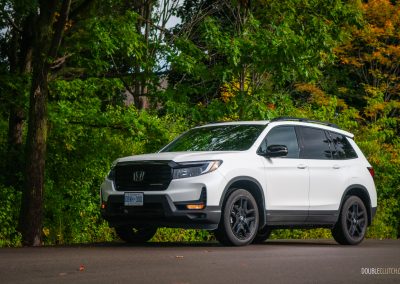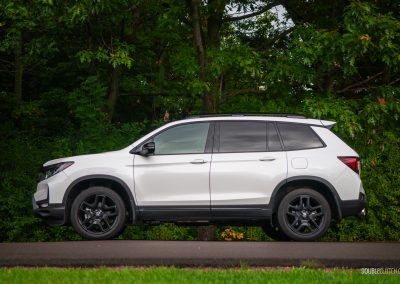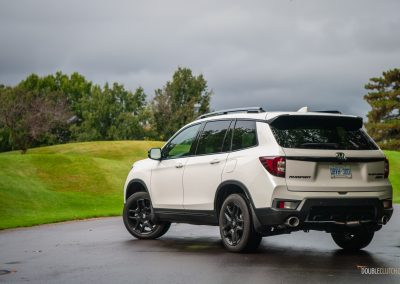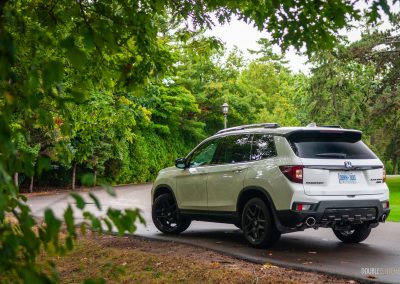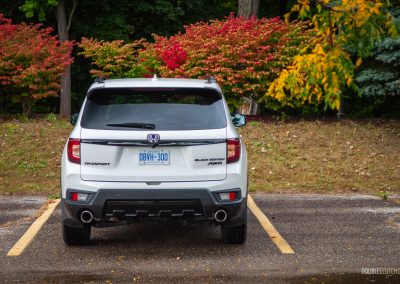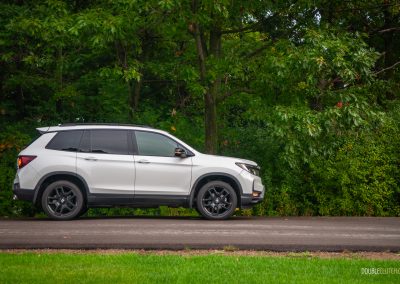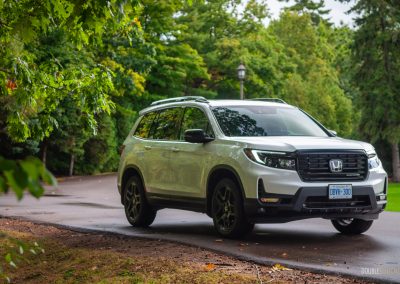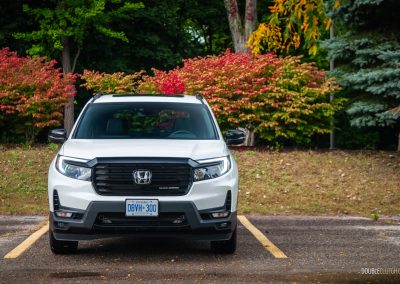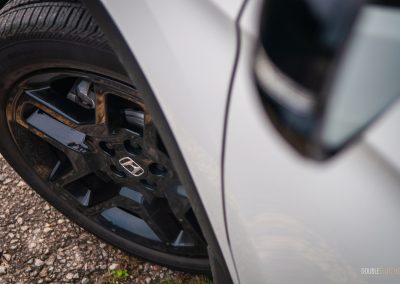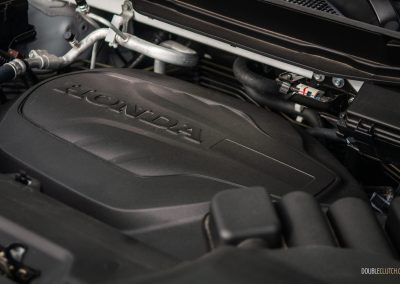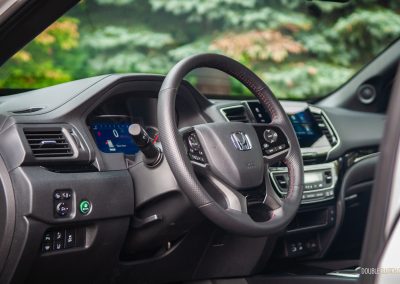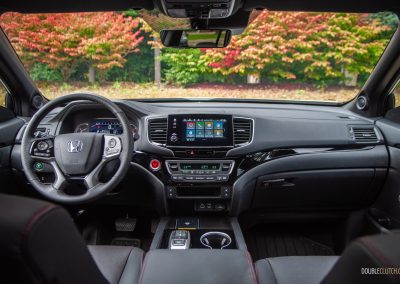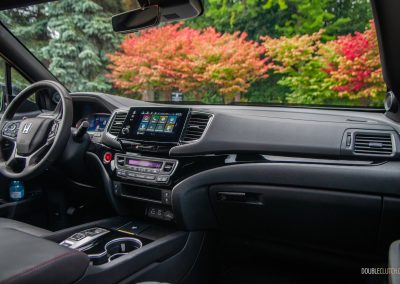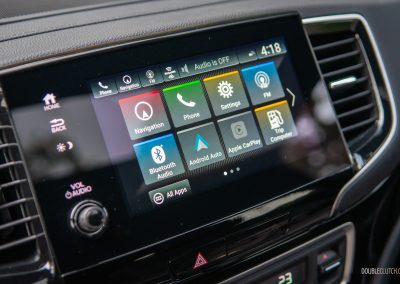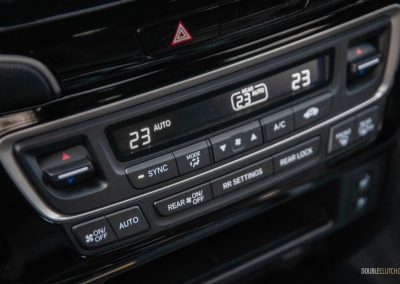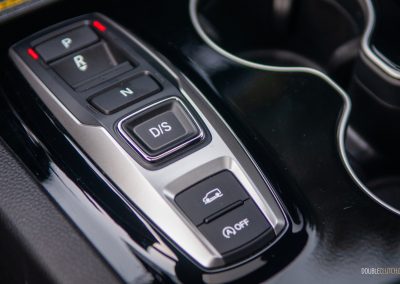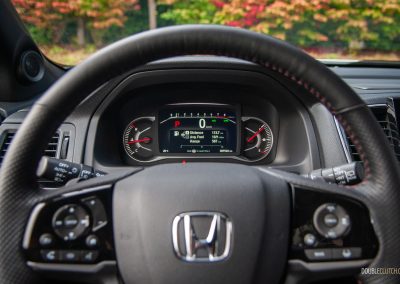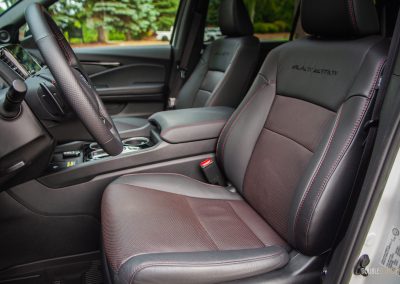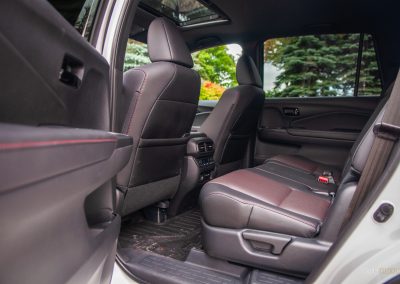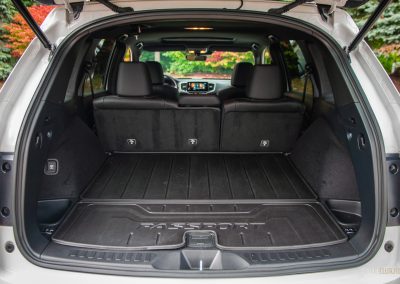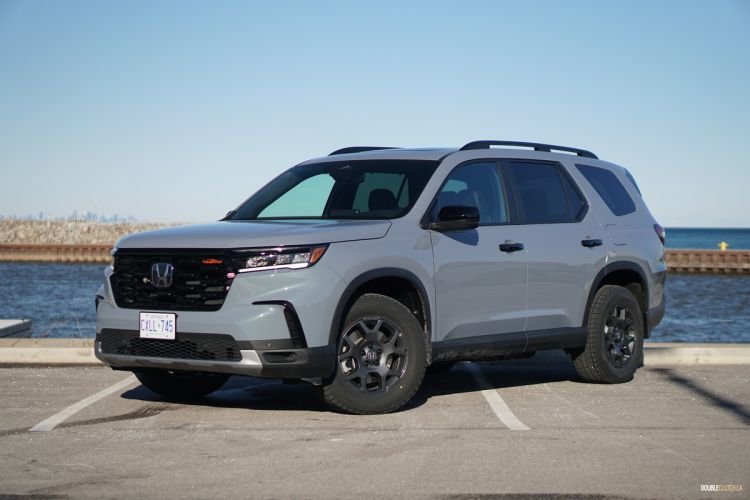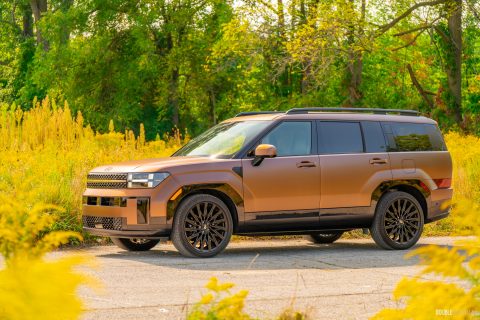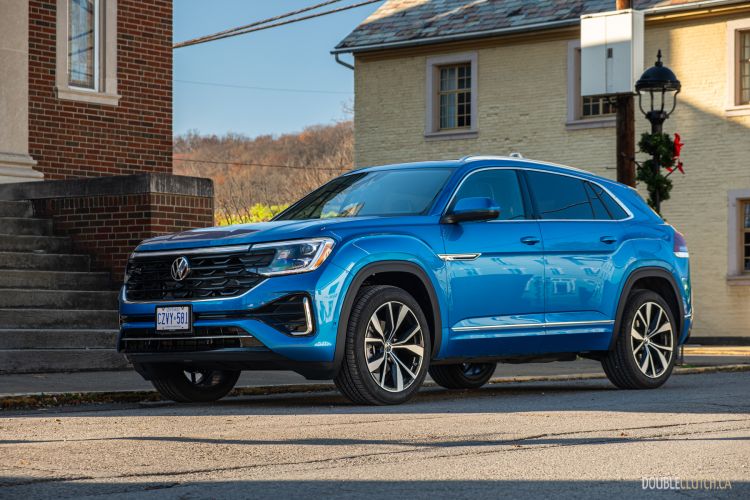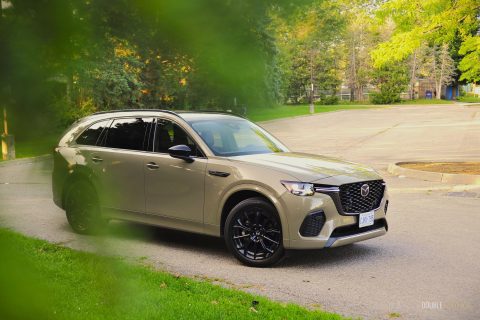Another year has passed, and the 2024 Honda Passport Black Edition trudges along as the forgotten child. This is truly a shame, because the Passport is underestimated in the two-row crossover segment: it meets most people’s needs and offers a smooth, normally aspirated powerplant that is becoming rarer and rarer out there.
For 2024, the Passport receives minor updates. The Black Edition trim we’re testing here is a new trim level sitting at the top of the lineup, while the off-road-oriented Trailsport model receives new all-terrain tires and suspension updates to improve its off-road capabilities. Everything else is a carryover, but one key update I noticed right away from the last Passport I drove was the seven-inch display in the gauge cluster. No longer purely analog, this one tweak alone makes it look much more modern.
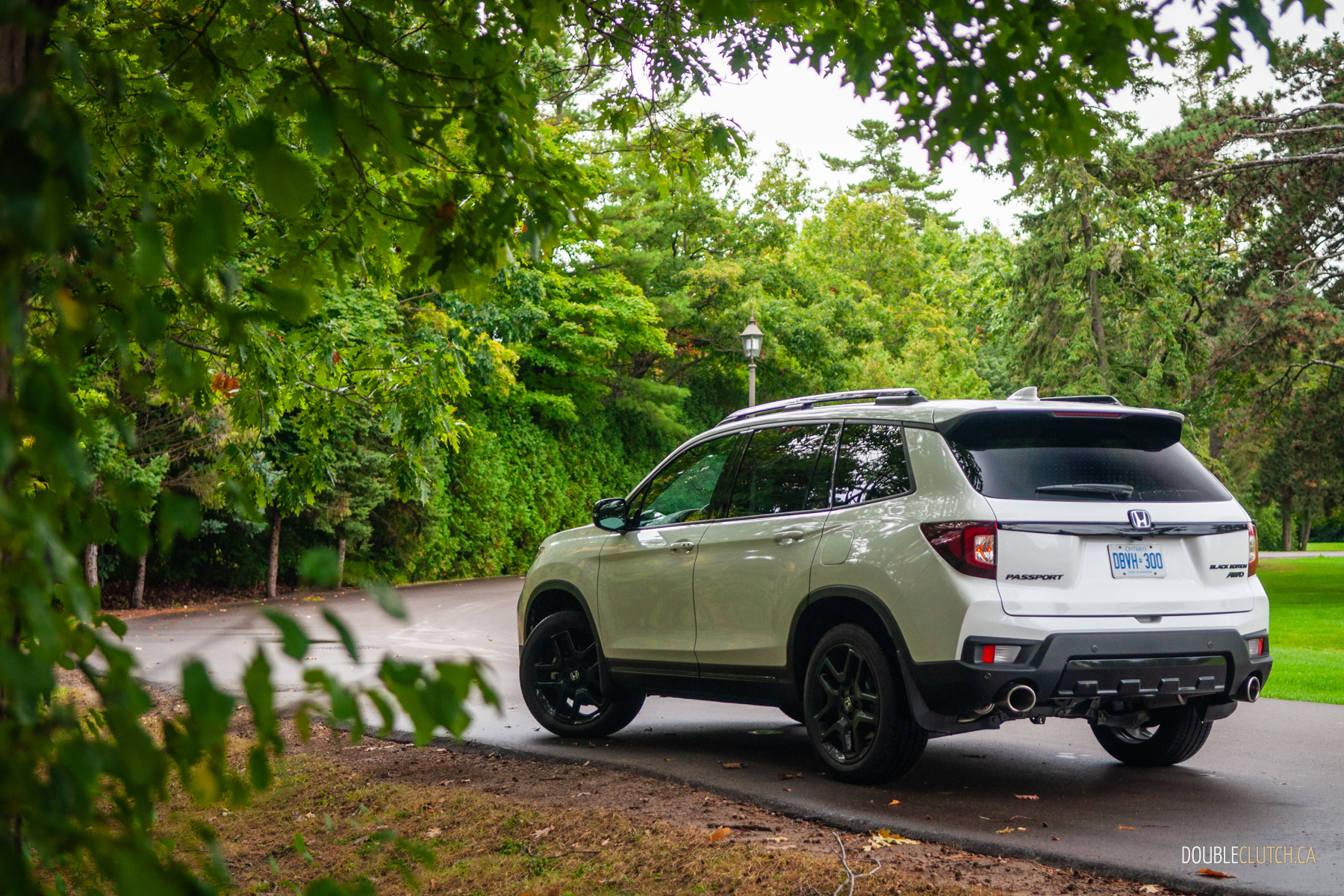
The Black Edition sits at the top of the Passport lineup, meaning it packs all the bells and whistles Honda can throw at it. Despite the name, our Passport Black Edition tester was finished in a pearl white—a $300 option—accented by a blacked-out grille, badges, and 20-inch wheels. Inside, you get leather seats with red stitching and “Black Edition” embossed in them, as well as red ambient lighting.
It’s a generally nice and comfortable environment, with good seats, generous cargo and passenger space, and great visibility all around, but it does fall behind a majority of its competitors when it comes to material quality and overall design. The Passport looks and feels very dated, especially compared to its Pilot and CR-V siblings.
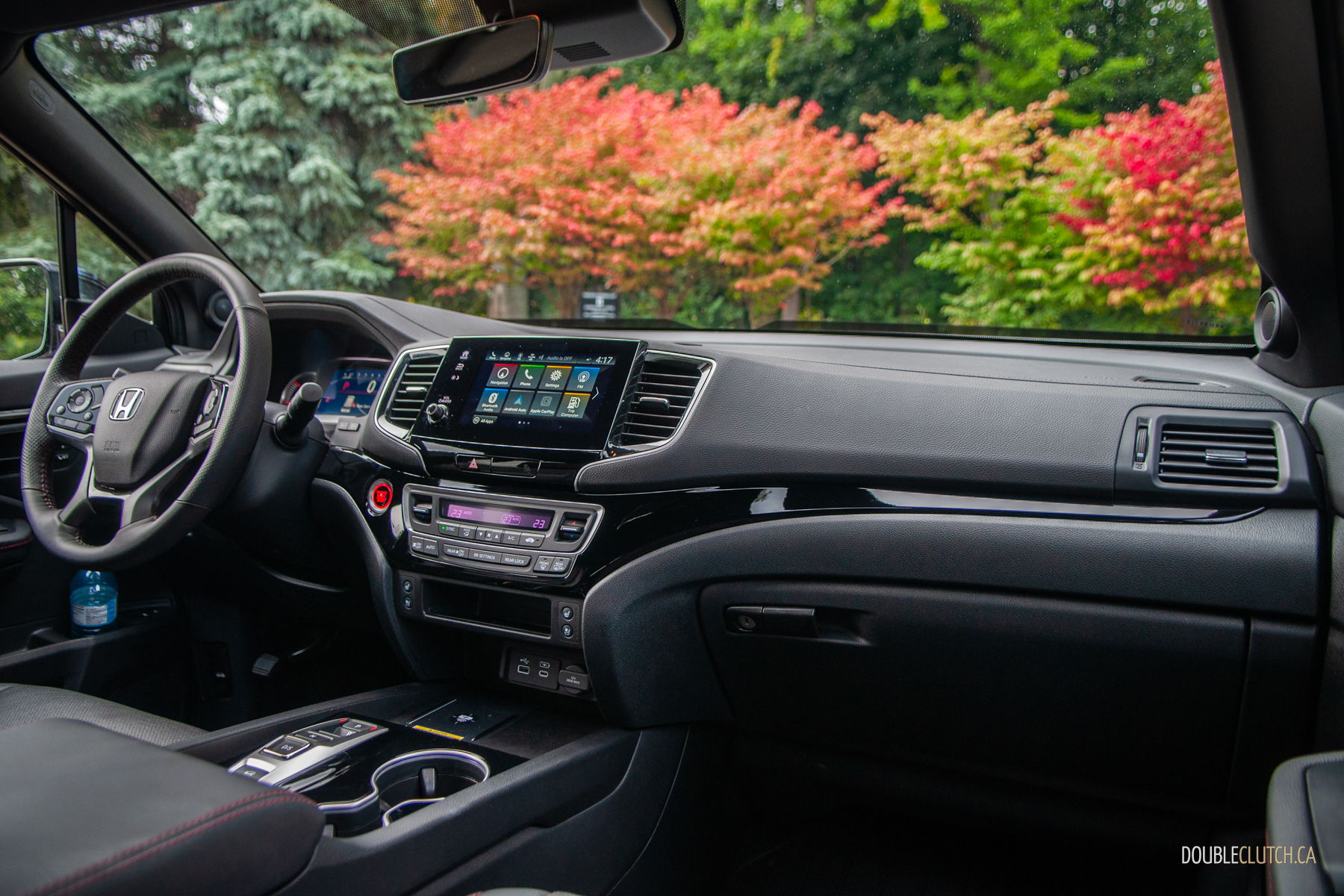
The infotainment is arguably what dates the Passport the most. The eight-inch display is small by today’s standards, and the overall layout and graphics lack pizzazz. It doesn’t help that the built-in navigation is provided by Garmin, with a user interface plucked straight out of those removable units you used to stick onto your windshield and plug into the cigarette lighter. The rear-view camera lacks the crispness and detail you’d expect in a modern vehicle, and the digital display sandwiched between the analog gauges isn’t well-integrated despite Honda’s intentions to modernize the otherwise analog gauge cluster.
That said, there’s an upside to the Passport’s aging. I appreciated Honda’s use of physical switchgear throughout the centre stack. Unlike so many new vehicles that bury these controls in their infotainment or use unintuitive haptic-feedback touch controls, Honda’s layout is straightforward to use and easy to access. You’ll also find physical buttons for seat heating and ventilation seats up front.

Another upside is the 3.5-litre V6 under the hood. While most SUVs today have moved to a turbo-four or a hybrid powertrain, Honda has stuck with its tried-and-true, normally aspirated V6. You’ll find old-school power delivery and smoothness; absent is any turbo lag that dampens the experience. It puts out a respectable 282 horsepower and 262 pound-feet of torque, sent to all four wheels through a nine-speed automatic transmission. All combined, look for a zero-to-100 km/h run in about 6.5 seconds.
There’s zero drama or snappy performance to the Passport, but the V6 is strong and smooth, and the transmission shifts quickly and accurately. Fuel economy does suffer because of the V6, but thankfully, it will happily accept regular grade fuel. During the week, I achieved a combined 11.5 L/100 km, slightly higher than Honda’s estimated figures. Towing capacity is a robust 5,000 pounds; what the Passport lacks in modernity and tech, it makes up for all that with a smooth powertrain and better towing capabilities.
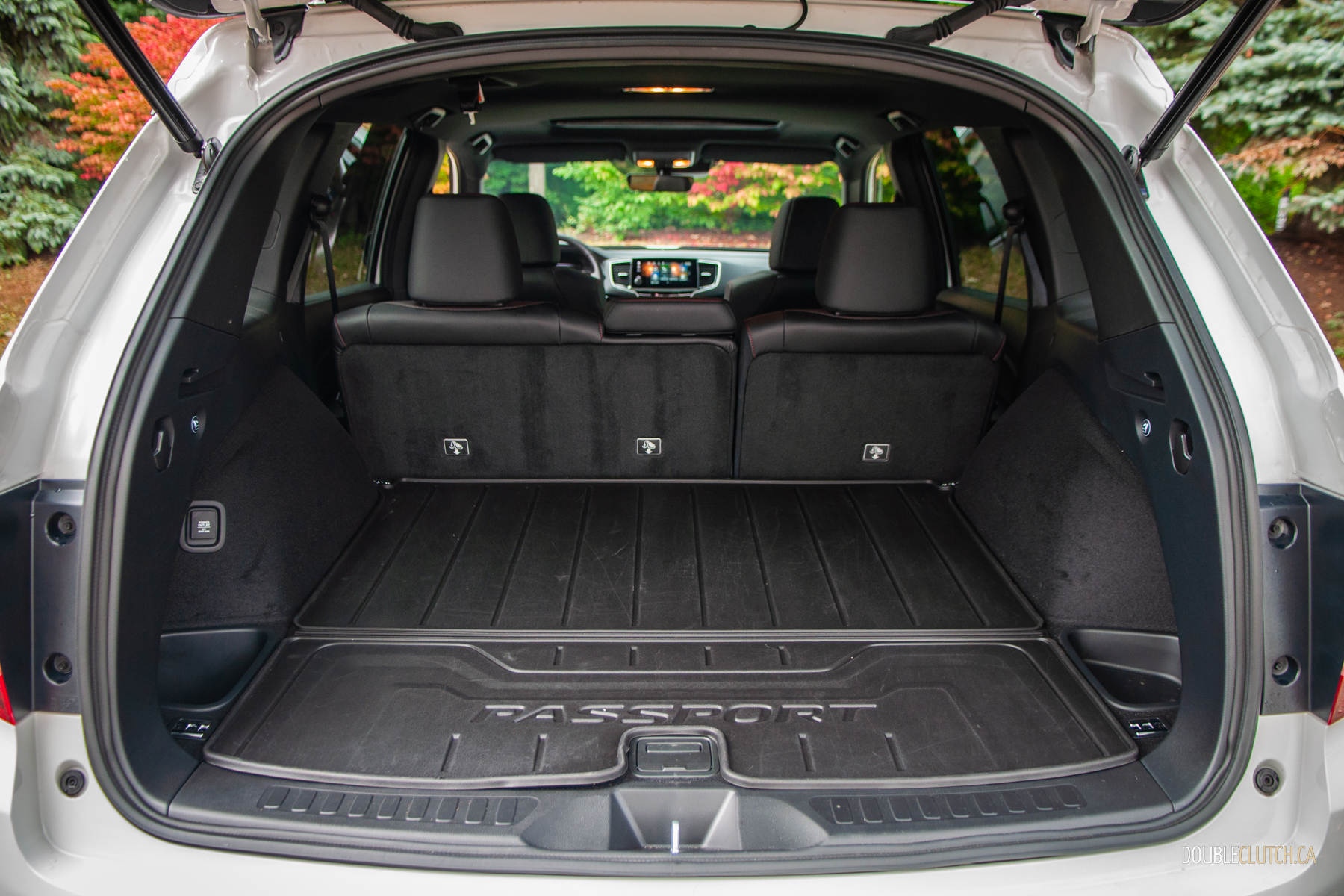
Most buyers will enjoy the Passport for its comfortable ride, too. As long as you leave the corner-carving to the Sis and Type Rs, you’ll be impressed by its accurate steering and minimal wind and road noise. The Passport eats up potholes and other imperfections with ease, too, making it perfect for those long drives up to the cottage. Speaking of, cargo space is impressive. With 1,167 litres with the rear seats up, not to mention the Passport’s boxy design overall and wide tailgate, loading it up for a weekend getaway is a cinch. Drop the rear seats and cargo space almost doubles to an impressive 2,200 L.
The 2024 Honda Passport Black Edition won’t win you over with the latest tech, a fancy interior, or the kind of fuel economy you’d expect from a much smaller vehicle. However, if you’re after a family friendly SUV that’s reliable, smooth, and holds its value well, there are very few options out there that do it better than the Passport. And if you really want one but the aging tech and interior is a deal-breaker, just wait for the redesigned, next-generation Passport, due out next year as a 2026 model.

